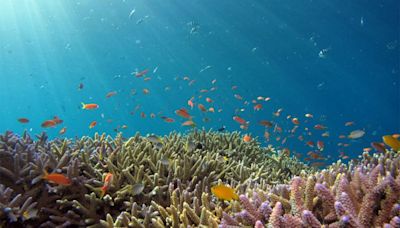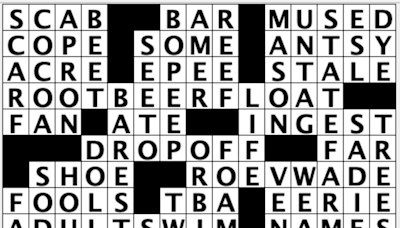Search results
- Great Barrier Reef. Length: 1,553 miles (2,500 km) Location: The Coral Sea near Australia's coast. The Great Barrier Reef Marine Park is a protected national park in Australia.
- Red Sea Coral Reef. Length: 1,180 miles (1,900 km) Location: The Red Sea near Israel, Egypt, and Djibouti. The corals in the Red Sea, especially in the northernmost part found in the Gulf of Eilat or Aqaba, are more resilient than most.
- New Caledonia Barrier Reef. Length: 932 miles (1,500 km) Location: The Pacific Ocean near New Caledonia. The diversity and beauty of the New Caledonia Barrier Reef earned it a place on the UNESCO World Heritage Sites list.
- The Mesoamerican Barrier Reef. Length: 585 miles (943 km) Location: The Atlantic Ocean near Mexico, Belize, Guatemala, and Honduras. The largest reef in the Western Hemisphere, the Mesoamerican Barrier Reef is also called the Great Mayan Reef and is part of a UNESCO site also containing the Belize Barrier Reef.
The Great Barrier Reef is the world's largest coral reef system, [1] [2] composed of over 2,900 individual reefs [3] and 900 islands stretching for over 2,300 kilometres (1,400 mi) over an area of approximately 344,400 square kilometres (133,000 sq mi). [4] [5] The reef is located in the Coral Sea, off the coast of Queensland, Australia ...
- 34,870,000 ha (86,200,000 acres)
- 1981 (5th Session)
- Natural: vii, viii, ix, x
- Off the east coast of the Queensland mainland, Australia
- Overview
- Geography
Great Barrier Reef, complex of coral reefs, shoals, and islets in the Pacific Ocean off the northeastern coast of Australia that is the longest and largest reef complex in the world. The Great Barrier Reef extends in roughly a northwest-southeast direction for more than 1,250 miles (2,000 km), at an offshore distance ranging from 10 to 100 miles (1...
The reef actually consists of some 2,100 individual reefs and some 800 fringing reefs (formed around islands or bordering coastlines). Many are dry or barely awash at low tide; some have islands of coral sand, or cays; and others fringe high islands or the mainland coast. In spite of this variety, the reefs share a common origin: each has been formed, over millions of years, from the skeletons and skeletal waste of a mass of living marine organisms. The “bricks” in the reef framework are formed by the calcareous remains of the tiny creatures known as coral polyps and hydrocorals, while the “cement” that binds these remains together is formed in large part by coralline algae and bryozoans. The interstices of this framework have been filled in by vast quantities of skeletal waste produced by the pounding of the waves and the depredations of boring organisms.
European exploration of the reef began in 1770, when the British explorer Capt. James Cook ran his ship aground on it. The work of charting channels and passages through the maze of reefs, begun by Cook, continued during the 19th century. The Great Barrier Reef Expedition of 1928–29 contributed important knowledge about coral physiology and the ecology of coral reefs. A modern laboratory on Heron Island continues scientific investigations, and several studies have been undertaken in other areas.
The reef has risen on the shallow shelf fringing the Australian continent, in warm waters that have enabled the corals to flourish (they cannot exist where average temperatures fall below 70 °F [21 °C]). Borings have established that reefs were growing on the continental shelf as early as the Miocene Epoch (23.0 million to 5.3 million years ago). Subsidence of the continental shelf has proceeded, with some reversals, since the early Miocene.
Britannica Quiz
Wonders of the World Quiz
The water environment of the Great Barrier Reef is formed by the surface water layer of the southwestern Pacific Ocean. The reef waters show little seasonal variation: surface-water temperature is high, ranging from 70 to 100 °F (21 to 38 °C). The waters are generally crystal-clear, with submarine features clearly visible at depths of 100 feet (30 metres).
- The Editors of Encyclopaedia Britannica
The Great Barrier Reef, located off the coast of Queensland, Australia, is the world’s largest coral reef system, consisting of over 3,000 individual reefs and stretching over 1,400 miles. It is home to thousands of species of marine life, including sea turtles, sharks, and dolphins, and is a popular destination for tourists and divers from ...
People also ask
Where is the largest coral reef in the world?
What is the best coral reef in the world?
What is the Great Barrier Reef?
How big is a coral reef?
The Great Barrier Reef is the largest living structure on Earth. Satellite photograph of the Great Barrier Reef situated off the northeastern coast of Australia. Stretching for 1,429 miles over an area of approximately 133,000 square miles , the Great Barrier Reef is the largest coral reef system in the world. The reef is located off the coast ...
The Great Barrier Reef is a site of remarkable variety and beauty on the north-east coast of Australia. It contains the world’s largest collection of coral reefs, with 400 types of coral, 1,500 species of fish and 4,000 types of mollusc. It also holds great scientific interest as the habitat of species such as the dugong (‘sea cow’) and ...
The reef forms a long narrow band around 2,300km long from North to South starting at the tip of Cape York Peninsula in the north and extending down to Bundaberg, but the reef only ever reaches up to 300km off shore. The reef can be seen from outer space and is the world’s largest single structure made by living organisms.



